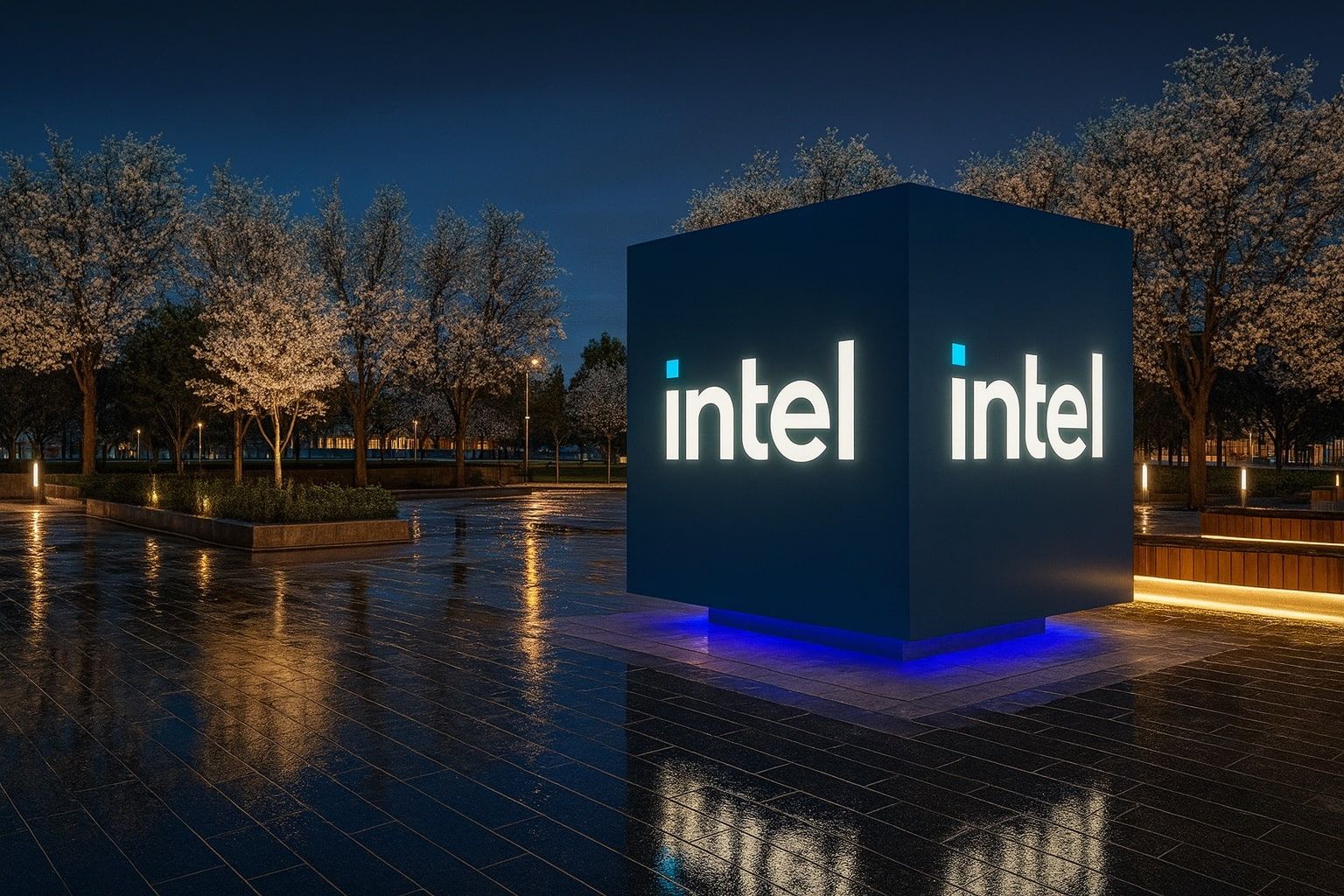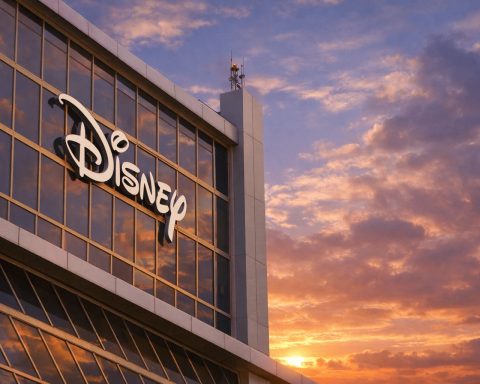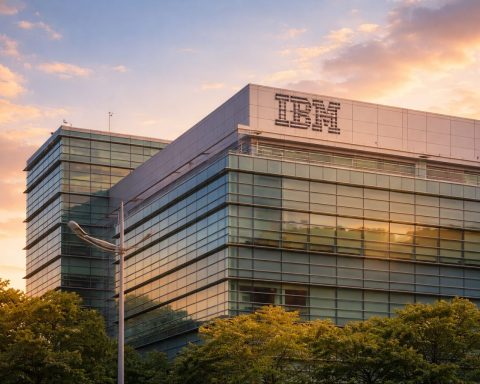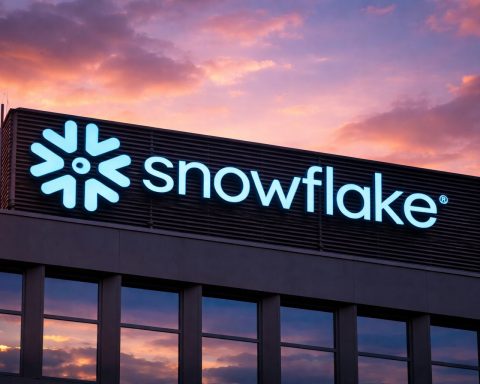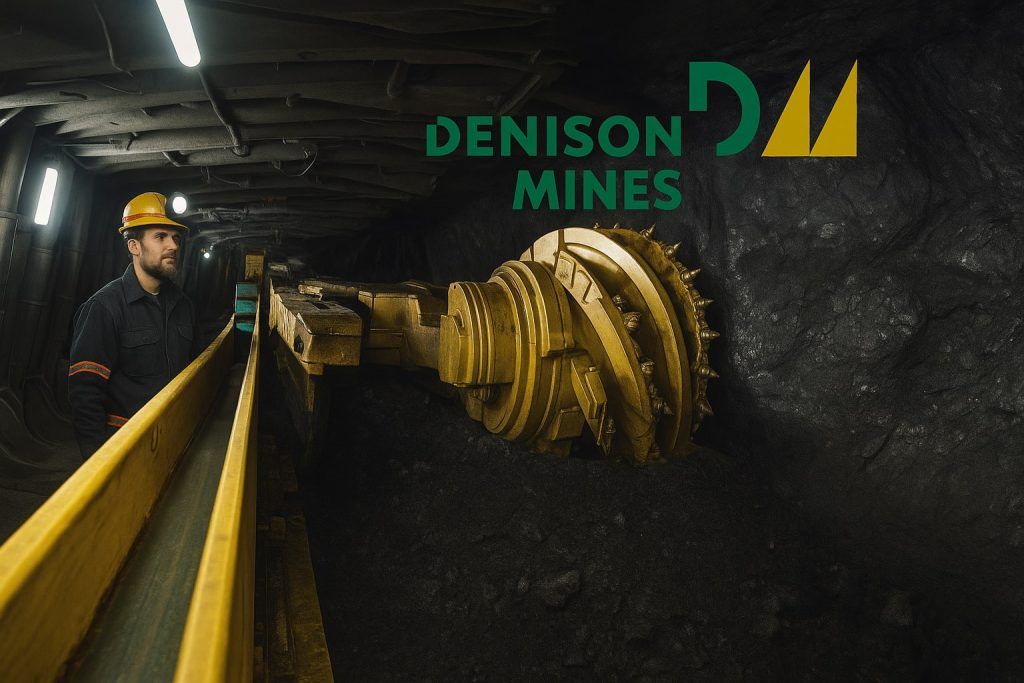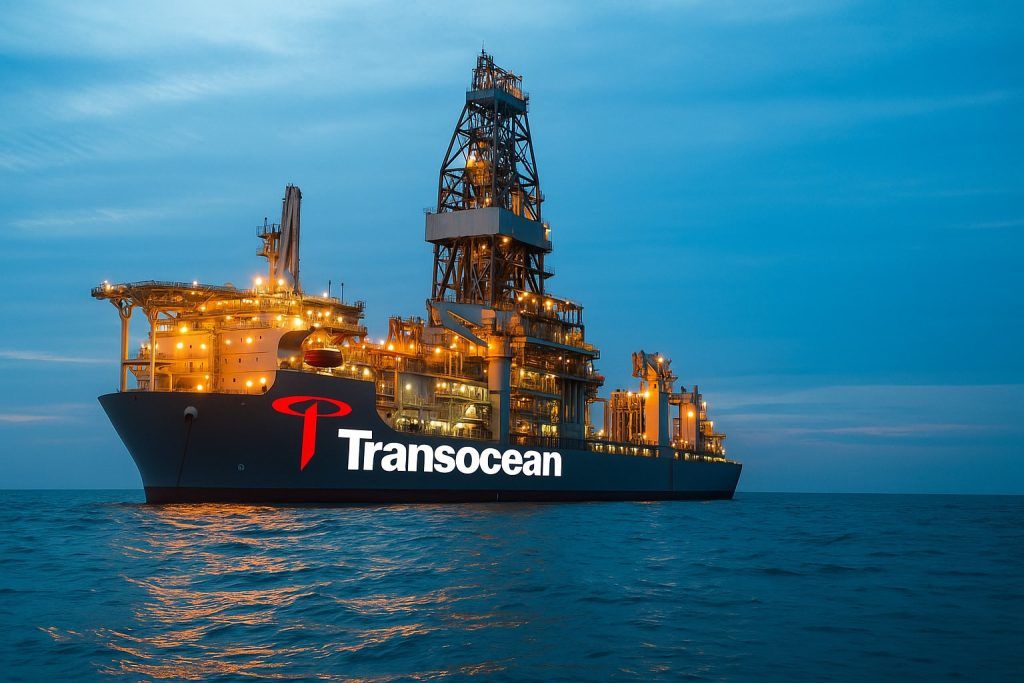- Multi-Year High: Intel’s stock (NASDAQ: INTC) is trading near a two-year high (around $37 per share as of Oct. 23, 2025) after surging roughly 85% year-to-date, bringing it within a few dollars of its 52-week peak (~$39.65) [1]. The rally has nearly doubled Intel’s market value this year, far outpacing even AI leader Nvidia’s gains [2].
- Big Backers Fuel Rally: A string of blockbuster deals ignited investor enthusiasm. In late August, the U.S. government converted CHIPS Act grants into equity, quietly taking a ~9.9% stake in Intel (~$8.9 billion) [3] – an unprecedented federal investment aimed at bolstering domestic chipmaking. Next, Nvidia announced a $5 billion investment for roughly 4% of Intel’s shares (part of a plan to co-develop next-gen AI chips) [4]. Japan’s SoftBank also bought a $2 billion stake in August [5]. Rumors suggest other tech giants may be circling: reports hint that AMD could outsource production to Intel’s factories, Microsoft’s Azure cloud might place chip orders, and even that Intel has approached Apple about a strategic investment [6] [7].
- Shaky Fundamentals: Despite the buzz, Intel’s core business remains under pressure. Q2 2025 revenue was $12.9 billion (flat year-over-year) and the company still posted a net loss [8]. New CEO Lip-Bu Tan (appointed March 2025) has slashed costs – cutting roughly 20% of Intel’s workforce and pausing costly projects [9] – yet Intel isn’t expected to return to profitability until 2026 [10]. For the upcoming Q3 2025 report (due Oct. 23 after market close), analysts forecast roughly flat sales (~$13.1 billion) and only breakeven earnings (around $0.01 adjusted EPS, with a GAAP net loss of ~$0.22) [11].
- Wall Street Caution: Many analysts remain skeptical even as Intel’s stock soars. The average 12-month price target is in the $26–$30 range – about 20–30% below the current share price [12]. Bank of America recently slapped an “Underperform” rating on Intel, warning the stock has run “too far, too fast” ahead of fundamentals [13]. While a few bulls have raised their targets above $40 after the big deals [14], the consensus on Wall Street is mixed: most analysts rate Intel a Hold, with only a couple of Buy ratings amid a sizable number of Sells [15].
- Fierce Competition: Intel’s rivals are capitalizing more on the AI boom. Nvidia now commands ~90% of the data-center AI processor market [16] and recently saw its market capitalization top $1 trillion. AMD’s stock has also soared (hitting record highs near $240, up ~80% in 2025) on wins in AI and server chips [17]. By contrast, Intel’s market cap (~$175 billion) is roughly half of AMD’s and just a fraction of Nvidia’s [18]. Intel continues to lose PC and server CPU share to AMD, and Arm-based chips (like Apple’s in-house silicon) pose a growing threat to Intel’s x86 dominance [19].
- Looking Ahead: Investors are anxiously awaiting Intel’s earnings update and guidance for clues of a real turnaround. Options markets are pricing in an unusually large ±10% swing for Intel’s stock around the Q3 results [20] – implying a potential surge toward the low-$40s or a drop into the low-$30s in the short term. In the bigger picture, the semiconductor industry’s outlook is bright – global chip sales are projected to hit a record ~$697 billion in 2025 amid colossal spending on AI infrastructure [21]. The question is whether Intel can ride those tailwinds and execute on its new partnerships and products to regain lost ground.
Intel Stock Soars on AI Buzz and Big Investments
Intel’s share price has staged a stunning comeback in 2025, rallying on hopes that bold strategic moves will revive the iconic chipmaker. As of late October, INTC shares hover in the mid-$30s, near their highest level in about two years [22]. The stock has nearly doubled from its lows in January, making Intel one of this year’s best-performing big tech stocks after years of languishing. On October 20, shares jumped ~3% to around $38, then pulled back slightly, reflecting heightened volatility ahead of earnings [23]. Even after a recent dip (the stock is off about 10% from its early-October peak), dip-buyers have eagerly stepped in to support Intel’s stock in the mid-$30s [24].
This dramatic surge follows a prolonged slump for Intel. The company spent much of the past few years lagging while competitors thrived, and Intel’s stock was still trading near multi-year lows as recently as mid-2023. Long-term investors remain underwater – even after 2025’s run-up, Intel’s share price is well below its all-time high (around $70 in 2021), and an investment five years ago would still be worth about one-third less today [25]. In other words, the recent rebound has only partially closed the gap from Intel’s prior decline. The stakes are now high to prove that this rally is more than just hype. As one market commentator noted, Intel’s stock has a history of popping on optimistic news only to cool off, so the company needs to deliver results to sustain the momentum [26].
Blockbuster Deals: U.S. Stake and Nvidia Partnership
What’s different about this year’s surge is the slew of unprecedented deals and partnerships backing Intel – developments almost unimaginable until recently. In a surprise move late this summer, the U.S. government took a direct ownership stake in Intel, aiming to secure America’s semiconductor supply chain. Washington converted about $8.9 billion of unused CHIPS Act subsidies into equity, buying roughly 274 million Intel shares (approximately a 9.9% stake) at around $20.47 per share [27]. This marks the first time the U.S. has invested at such scale in a major tech firm’s stock, and it handed Intel a critical cash lifeline for its turnaround. The White House’s investment – essentially making the government one of Intel’s largest shareholders – underscores how strategically important Intel is viewed in the race for chip technology leadership.
Just weeks after the government deal, Nvidia – the world’s leading AI chip company – stunned observers by agreeing to invest $5 billion in Intel for roughly a 4% stake [28]. Even more significant, Nvidia and Intel announced plans to collaborate on new chips that combine Intel’s central processors with Nvidia’s AI accelerators [29]. As Reuters noted, Nvidia’s move “not only provided cash; it also came with a plan” for jointly designed PC and data-center products [30]. This partnership sent a jolt of optimism through the market: Intel’s stock soared 22% in a single day on the news – its biggest one-day jump since 1987 [31]. For Nvidia, teaming up with what was once its rival signals a pragmatic alliance to tackle surging demand for AI computing. (Notably, Nvidia’s deal does not require using Intel’s in-house chip factories [32], a point analysts flagged as a reminder that Intel’s manufacturing tech still must prove itself attractive.)
Additionally, SoftBank, the giant Japanese tech investor, quietly bought a $2 billion stake in Intel over the summer [33]. SoftBank’s purchase – reportedly through its investment arms – was another vote of confidence and added to the sense that big players see deep value in Intel’s future.
These infusions of capital and vote-of-confidence partnerships have fed a narrative that Intel could be on the cusp of a revival. And Intel may not be done securing allies. Industry chatter suggests Intel has been reaching out to other tech titans: in September, Bloomberg and Reuters reported that Intel approached Apple about a potential investment or collaboration [34]. The talks were preliminary and may not lead anywhere, but just the rumor of Apple’s interest sent Intel’s shares higher [35]. Such a partnership would be dramatic – Apple was once a major Intel customer (before it switched to its own Mac chips), and a stake or chip-supply deal with Apple could help diversify Apple’s supply chain away from TSMC amid geopolitical risks [36] [37]. Skeptics note Apple would need to see clear technological advantages from Intel to justify investing – otherwise it may prefer to invest in its own chipmaking or simply buy back its stock [38]. So far, nothing concrete has materialized on this front.
Intel is also reportedly courting its rivals. There was a buzz in early October that AMD – Intel’s arch-foe in PC processors – might use Intel’s foundry services to manufacture some chips, an almost ironic twist that nonetheless briefly boosted Intel’s stock [39]. Likewise, there’s talk that cloud providers like Microsoft (Azure) or Amazon (AWS) could outsource certain chip production to Intel if it helps secure supply. Intel even broached the idea of partnerships with TSMC, the world’s leading contract chipmaker, despite TSMC being a competitor in manufacturing [40]. The overarching strategy for Intel CEO Tan is clear: spread the risk and cost of Intel’s turnaround by enlisting big partners. Each new equity stake, joint venture or pre-order deal not only brings in cash, but also serves as validation from industry leaders that Intel’s roadmap is worth betting on.
New Products and Turnaround Efforts
Alongside the deal-making, Intel has been touting its technology roadmap in an effort to prove it can catch up with rivals. In October, the company previewed its next-generation chips: the upcoming “Panther Lake” processors for PCs (branded Core Ultra 3) and “Clearwater Forest” server chips [41]. Importantly, these will be built on Intel’s advanced 18A process node – roughly equivalent to a 2-nanometer technology – which Intel has slated for high-volume manufacturing in 2025. The initial Panther Lake CPUs are expected to ship by the end of 2025 [42] [43], making them the first Intel chips made on the 18A (1.8 angstrom) node. Successfully executing the 18A process is crucial to Intel’s future: it not only underpins Intel’s own product competitiveness (allowing faster, more power-efficient chips), but it’s also key to Intel’s ambitions as a contract manufacturer building chips for others. Intel’s foundry business has struggled to take off, with virtually no major outside customers yet [44]. CEO Tan has indicated Intel will only build new chip fabs when there’s confirmed demand [45] – a sharp change from previous CEO Pat Gelsinger’s strategy of building ahead of demand. In fact, Tan has slowed or halted construction of new mega-factories in Ohio, Germany, and Poland to avoid overspending [46]. The message: Intel will focus on hitting its technical milestones and securing customers before pouring more capital into expansion.
Intel is also trying to address its weak position in artificial intelligence chips. The company frankly admits it has “virtually no foothold” in AI accelerators today compared to Nvidia’s dominance [47]. To change that, Intel is developing a new AI-oriented GPU for data centers (codenamed “Falcon Shores” in earlier reports), slated to launch in 2024 [48] [49]. It’s essentially a second attempt after Intel’s first AI chips (like the Habana Gaudi accelerators) failed to gain traction. Additionally, Intel’s strategy is to incorporate AI features into its PC and server processors – for example, adding on-chip AI acceleration for PC workloads – to make its CPUs more attractive in an AI-driven era [50]. By partnering with Nvidia and others, Intel hopes to cover gaps in its lineup (for instance, pairing Intel CPUs with Nvidia GPUs in hybrid systems).
All these efforts are part of Tan’s broader turnaround plan since he took the helm. Internally, Tan has enforced a new financial discipline. He famously told employees “there are no more blank checks” for moonshot projects [51] – every initiative must show a clear path to returns. Under this mandate, Intel has cut or scaled back non-core ventures. The company has wound down parts of its business that aren’t critical to its CPU and foundry focus (for example, divesting a stake in its Altera FPGA unit) [52]. The workforce reductions have been deep: Intel will end 2025 with around 75,000 employees, over 20% fewer than a year prior [53]. These painful cuts and asset sales, combined with the influx of cash from partners, aim to stabilize a company that lost a staggering $18.8 billion in 2024 – Intel’s first annual loss since 1986 [54].
Despite aggressive cost-cutting, Intel’s fundamentals are still shaky. Gross profit margins have plummeted (below 30% recently) and profitability remains elusive [55]. In Q2 2025, Intel barely broke even on an operating basis and continued to burn cash [56]. The company’s own guidance foreshadows more red ink in the immediate term – Intel told investors to expect a larger loss in Q3, partly due to the dilution from issuing new shares to its government and corporate investors [57]. In fact, with the U.S., Nvidia, and SoftBank deals, Intel’s share count is rising, which mathematically spreads any earnings over more shares (pressuring per-share earnings) [58]. That said, Intel and its backers argue that an injection of nearly $15 billion combined from these deals gives Intel the breathing room to invest in its technology roadmap and eventually return to growth [59]. As CEO Tan quipped, by taking Washington’s $8.9 billion stake he effectively “picked up $10 billion” in found money [60] – a tongue-in-cheek reference to shoring up Intel’s balance sheet without tapping public markets.
Competitive Pressures from AMD, Nvidia, and Arm
Intel’s renewed drive comes as it faces perhaps the toughest competitive landscape in its history. Longtime rival AMD continues to chip away at Intel’s dominance in PC and server CPUs. AMD’s latest processors, built by TSMC on advanced 4nm/5nm nodes, have in many cases leapfrogged Intel on performance per watt, allowing AMD to steadily grow its market share in laptops, desktops, and especially data centers [61]. Analysts estimate Intel’s share of server CPUs (by units) has fallen below 70%, from virtually 100% a few years ago, as AMD’s EPYC chips make inroads. Moreover, a new threat has emerged in the form of Arm-based chips. Companies like Apple, Amazon, and Google now design their own Arm-based processors for everything from high-end Macs (Apple’s M-series chips) to cloud servers, seeking better efficiency. This trend toward Arm architecture is eroding the dominance of Intel’s x86 chip blueprint in segments that Intel once controlled [62]. Even Microsoft is reportedly exploring Arm-based chips for its PCs and servers. In short, Intel is fighting a two-front war in CPUs – against AMD’s x86 designs on one side and a wave of custom Arm silicon on the other.
Then there’s the AI chip arena, where Nvidia is the 800-pound gorilla. Nvidia’s graphics processing units (GPUs) have become the de facto standard for training artificial intelligence models, giving Nvidia an estimated 90%+ share of the AI accelerator market in data centers [63]. This boom has propelled Nvidia’s market cap above $1 trillion and its latest flagship GPUs (like the H100) face months-long backorders from eager AI firms. AMD is also vying in AI accelerators (with its MI300 chip winning some deals) and has seen its stock jump to record highs on optimism about its role in AI and continued growth in traditional chips [64]. Intel, by contrast, currently has minimal presence in AI accelerators – a fact not lost on investors. The company does supply plenty of standard CPUs for cloud servers, and those servers pair Intel’s CPUs with Nvidia’s GPUs for AI workloads [65], so Intel indirectly benefits from the AI datacenter build-out. Indeed, Intel’s data-center division is expected to show improved sales (analysts forecast an ~18% revenue rise in that unit for Q3) as cloud giants expand infrastructure [66]. But to truly ride the AI wave long-term, Intel will need competitive silicon of its own in the AI space. The upcoming AI-oriented chips in 2024 will be a critical test of whether Intel can claw into this fast-growing market or whether it remains an Nvidia-dominated field.
It’s also worth noting that Intel’s market value – about $175 billion – pales next to its key competitors [67]. AMD’s market capitalization now roughly doubles Intel’s, despite Intel being several times larger by revenue. And Nvidia, of course, is in another stratosphere entirely in valuation. This gap reflects how much optimism investors have for AMD and Nvidia (with their strong execution and growth in cutting-edge markets) versus the skepticism around Intel. Qualcomm – another peer which leads in mobile chips – is similarly pivoting toward AI and custom silicon, although it remains earlier in that journey [68]. Intel thus finds itself in an unusual position: it is an industry giant with enormous legacy scale, yet in the eyes of the market it’s now an underdog in the most lucrative new segments.
Analyst Sentiment: Optimism vs. Skepticism
On Wall Street, Intel’s dramatic moves have elicited both praise and caution from experts. Bulls argue that the involvement of heavyweights like the U.S. government, Nvidia, and (potentially) others signals validation of Intel’s prospects. Wedbush analyst Dan Ives recently dubbed Intel “the comeback kid,” saying it appears that “Big Tech wants to be in the Intel game” now, after years of the company being written off [69]. The high-profile partnerships are seen as a vote of confidence that Intel’s technology roadmap (e.g. its 18A process and new chip designs) has real promise. Some optimists have even raised their price targets into the $40s for Intel stock, predicting that if the new alliances bear fruit, Intel’s earnings and market share could surprise to the upside [70]. There’s also a sense that Intel’s massive rally could have momentum on its side – Seaport Research, for example, upgraded Intel from Sell to Neutral not because of immediate fundamentals, but acknowledging that follow-on investments from big partners could keep the stock running higher in the near term [71].
However, many analysts urge caution, pointing out that nothing fundamentally has changed yet in Intel’s business to justify the stock’s leap. Bank of America recently reiterated an “Underperform” rating, bluntly arguing that Intel’s stock price had climbed “too far, too fast” without evidence of a turnaround in its financial performance [72]. The consensus view remains guarded: according to market data, a majority of analysts rate Intel a Hold, and very few recommend buying at current levels [73]. The average 12-month price target across Wall Street is only around $30 per share [74], which is ~20% lower than Intel’s recent trading price – essentially predicting the stock will pull back once the hype tempers. In fact, some hedge funds have publicly bet against Intel in the short run, reasoning that the rally is overextended given ongoing losses and competitive woes (though those bets have been painful so far in 2025’s climb).
Even those who own Intel stock are somewhat circumspect. “Intel’s problems are beyond a cash infusion… it needs to catch up with TSMC technologically to attract business,” one portfolio manager warned [75], emphasizing that partnership money alone won’t fix Intel’s lag in chip manufacturing capabilities. Another investor, Joe Tigay of the Rational Equity Armor Fund, noted that markets have been unusually forgiving of Intel’s current struggles because expectations are high that the new deals will eventually bear fruit. “The markets are giving Intel a major pass on their current struggles,” Tigay said, adding that Intel has been granted leeway based on what these partnerships might deliver down the road [76]. In other words, investors are looking past weak earnings in the hope of a brighter future – a stance that could quickly change if that future doesn’t materialize as hoped.
On the more positive end, some commentators have praised Intel’s new leadership. CNBC’s Jim Cramer lauded CEO Lip-Bu Tan (a veteran venture capitalist in semiconductors) as “a legendary semiconductor investor” whose deals have finally brought “adult supervision” to Intel’s strategy [77]. Cramer credited Tan’s bold moves for sparking the roughly 50% rally in the stock since he took over [78], suggesting that experienced hands are now guiding Intel back toward relevance in AI. Still, even Cramer tempered his optimism by acknowledging that execution is key – Tan and Intel must prove they can develop competitive chips on time and profitably.
Outlook: Can Intel’s Turnaround Deliver?
With Intel’s critical Q3 earnings report on deck, the coming days will provide a reality check on whether the optimism is warranted. The company’s results will show if the tentative improvements in the PC market and data center demand are translating into stabilized revenues (analysts expect a slight ~1% sales decline year-over-year for Q3) [79]. More importantly, CEO Tan’s commentary and guidance could shed light on how the recent investments will be used – investors will want updates on the timelines for the Nvidia partnership chips, any concrete plans with the government funds, and progress on courting new customers like Apple or others.
In the short term, traders are bracing for turbulence. Implied volatility around Intel’s earnings is high – options pricing suggests the stock could swing about 10% in either direction once results hit [80]. A strong report or upbeat outlook (e.g. signs that PC demand is rebounding or that 18A chip production is on track) could push Intel shares into the $40+ range in the near term [81]. Conversely, any disappointment – say, weaker margins, product delays, or vague updates on the partnerships – could send the stock down toward the low $30s [82] as fast-money investors take profits. The Q3 report date (Oct. 23) has been circled on calendars as a potential inflection point (“make or break” in the words of some analysts) for Intel’s 2025 rally [83].
Looking further out, the long-term trajectory for Intel will depend on executing its technology roadmap and partnership strategy over the next 1–2 years. Key milestones to watch include: whether Intel can meet its schedule for 18A-based chips in 2025 (and demonstrate that the process yields are competitive), how the co-developed Intel-Nvidia chips perform (could they grab meaningful market share from AMD or even challenge some of Nvidia’s own products?), and whether Intel’s foundry business can finally land big external customers. If deals with companies like Apple, Microsoft, or others materialize in coming months – either as investments or major chip production contracts – that would strongly support the bullish case that Intel is truly turning a corner. Such wins could also bring in new revenue streams (e.g. making chips for others) to supplement Intel’s PC and server CPU sales, which are in mature markets.
However, Intel also faces risks that could hinder its comeback. Technical setbacks are a prime concern – for instance, there are reports of yield problems in early 18A manufacturing trials [84]. Any significant delay in Intel’s next-gen chip launches could frustrate partners and customers, giving competitors even more time to pull ahead. Likewise, if the much-hyped partnerships don’t produce tangible results – for example, if the Nvidia collaboration fails to deliver a competitive product or if no further big-name investors step up – the market’s patience with Intel could wear thin. As some skeptics point out, Intel’s core PC and server markets aren’t high-growth areas anymore, so simply stabilizing those businesses won’t ignite strong growth; Intel needs new growth drivers (in AI, foundry services, etc.) and those remain aspirational today [85].
For now, Intel has bought itself time and goodwill. The infusion of nearly $9 billion from Uncle Sam and billions more from industry partners has shored up confidence that Intel can afford to fix its problems. The stock’s strength shows that investors are giving Intel a chance to prove the doubters wrong [86]. Over the next few quarters, all eyes will be on how Intel leverages this second chance – whether it’s by surprising the market with better-than-expected earnings, securing marquee deals, or launching chips that close the gap with AMD, Nvidia, and TSMC. If Intel can execute well, the recent rally could mark the start of an impressive comeback story. If not, the company may find that enthusiasm is fleeting and the stock’s gravity will pull it back down to earth. Either way, the coming earnings and developments will be pivotal for Intel’s narrative as it races to regain its former leadership in the semiconductor industry.
Sources: Intel and financial news reports [87] [88] [89] [90] [91] [92] [93] [94] [95] [96] [97] [98] [99] [100] [101] [102] [103] [104] [105], Reuters, TS2.Tech, Bloomberg, Deloitte.
References
1. ts2.tech, 2. www.reuters.com, 3. ts2.tech, 4. ts2.tech, 5. ts2.tech, 6. ts2.tech, 7. ts2.tech, 8. ts2.tech, 9. ts2.tech, 10. ts2.tech, 11. www.reuters.com, 12. ts2.tech, 13. ts2.tech, 14. ts2.tech, 15. ts2.tech, 16. ts2.tech, 17. ts2.tech, 18. ts2.tech, 19. www.reuters.com, 20. ts2.tech, 21. ts2.tech, 22. ts2.tech, 23. ts2.tech, 24. ts2.tech, 25. ts2.tech, 26. ts2.tech, 27. ts2.tech, 28. ts2.tech, 29. ts2.tech, 30. ts2.tech, 31. ts2.tech, 32. ts2.tech, 33. ts2.tech, 34. ts2.tech, 35. ts2.tech, 36. ts2.tech, 37. ts2.tech, 38. ts2.tech, 39. ts2.tech, 40. ts2.tech, 41. ts2.tech, 42. ts2.tech, 43. www.reuters.com, 44. ts2.tech, 45. ts2.tech, 46. ts2.tech, 47. ts2.tech, 48. ts2.tech, 49. www.reuters.com, 50. ts2.tech, 51. ts2.tech, 52. ts2.tech, 53. ts2.tech, 54. ts2.tech, 55. ts2.tech, 56. ts2.tech, 57. ts2.tech, 58. www.reuters.com, 59. www.reuters.com, 60. ts2.tech, 61. www.reuters.com, 62. www.reuters.com, 63. ts2.tech, 64. ts2.tech, 65. www.reuters.com, 66. www.reuters.com, 67. ts2.tech, 68. ts2.tech, 69. ts2.tech, 70. ts2.tech, 71. ts2.tech, 72. ts2.tech, 73. ts2.tech, 74. ts2.tech, 75. ts2.tech, 76. ts2.tech, 77. ts2.tech, 78. ts2.tech, 79. www.reuters.com, 80. ts2.tech, 81. ts2.tech, 82. ts2.tech, 83. www.barchart.com, 84. ts2.tech, 85. ts2.tech, 86. ts2.tech, 87. ts2.tech, 88. ts2.tech, 89. ts2.tech, 90. www.reuters.com, 91. ts2.tech, 92. ts2.tech, 93. ts2.tech, 94. ts2.tech, 95. www.reuters.com, 96. ts2.tech, 97. www.reuters.com, 98. ts2.tech, 99. ts2.tech, 100. ts2.tech, 101. ts2.tech, 102. ts2.tech, 103. ts2.tech, 104. www.reuters.com, 105. ts2.tech
